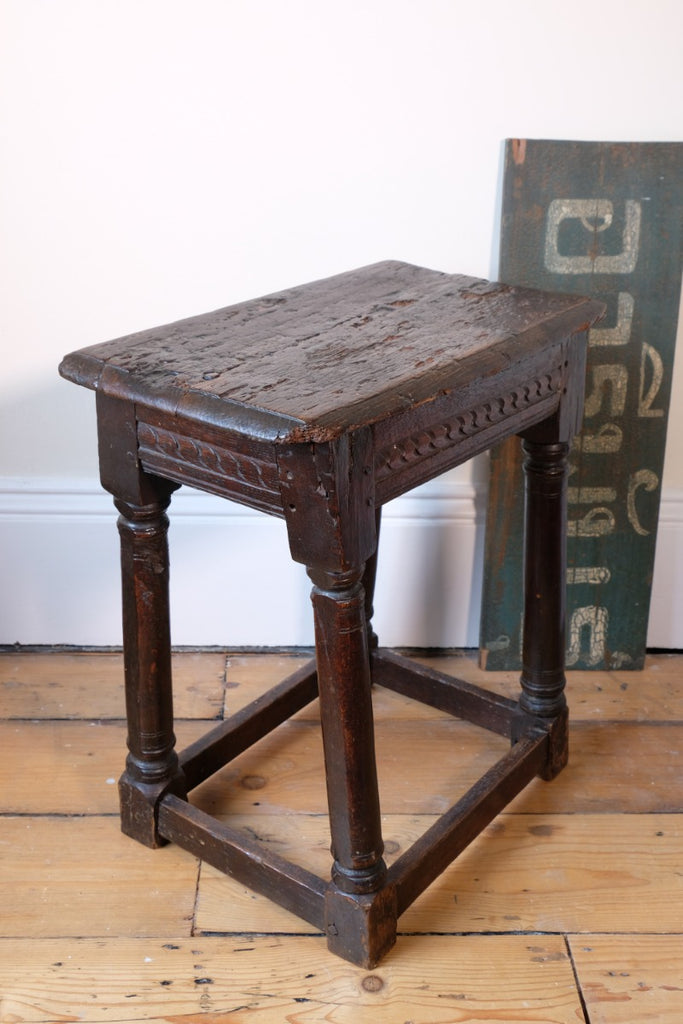
17th-Century Oak Stools: Timeless Windows to Artistry and Daily Life
English 17th-century oak pegged and jointed stools are fascinating pieces of furniture that provide insight into craftsmanship and domestic life before the widespread adoption of chairs with backs.
Construction
- Materials: These stools were typically made from oak, a durable and readily available wood in England at the time.
- Joinery: The stools were constructed using mortise-and-tenon joints, secured with wooden pegs rather than nails or screws. This technique ensured durability and allowed for some flexibility in the structure, preventing cracking or splitting over time.
- Finish: The stools often featured a simple, smooth finish, though some had carved decoration along the legs or seat edges, showcasing the maker's skill.
Design Features
- Shape: Stools were generally rectangular or square in shape, with a flat seat and four splayed legs.
- Stretchers: The legs were often connected by stretchers (horizontal support beams), adding stability. These stretchers could be plain or embellished with turning or carving.
- Size: They were relatively compact, making them easy to move and practical for use in small spaces.
Function
- Multi-purpose use: Stools were versatile pieces of furniture used for seating, as small tables, or even as footrests.
- Communal seating: Before chairs with backs became common, stools were the primary seating option in many homes, especially for lower and middle-class households. Only wealthier individuals owned chairs, often reserved for the head of the household or honored guests.
Cultural Context
- Furniture evolution: These stools predate the widespread adaptation of chairs with backs, which began appearing more commonly in England toward the late 17th century. The transition was influenced by changes in social norms and increasing availability of materials and skilled craftsmen.
- Symbol of status: Chairs were initially seen as a luxury item, while stools were more utilitarian and widely accessible.
- Carving and decoration: More ornate examples of stools from this period were likely owned by wealthier households. Simple stools reflected the practicality and limited resources of the common folk.
Legacy
- Antique value: Today, these stools are highly collectible antiques, appreciated for their craftsmanship, historical significance, and rustic aesthetic.
- Survivability: Their sturdy construction and durable oak material have allowed many examples to survive over the centuries, though original finishes may have been worn away or altered.
If you’re interested in collecting or studying these stools, examining the tool marks, joinery techniques, and patina can provide clues about their age and authenticity.
